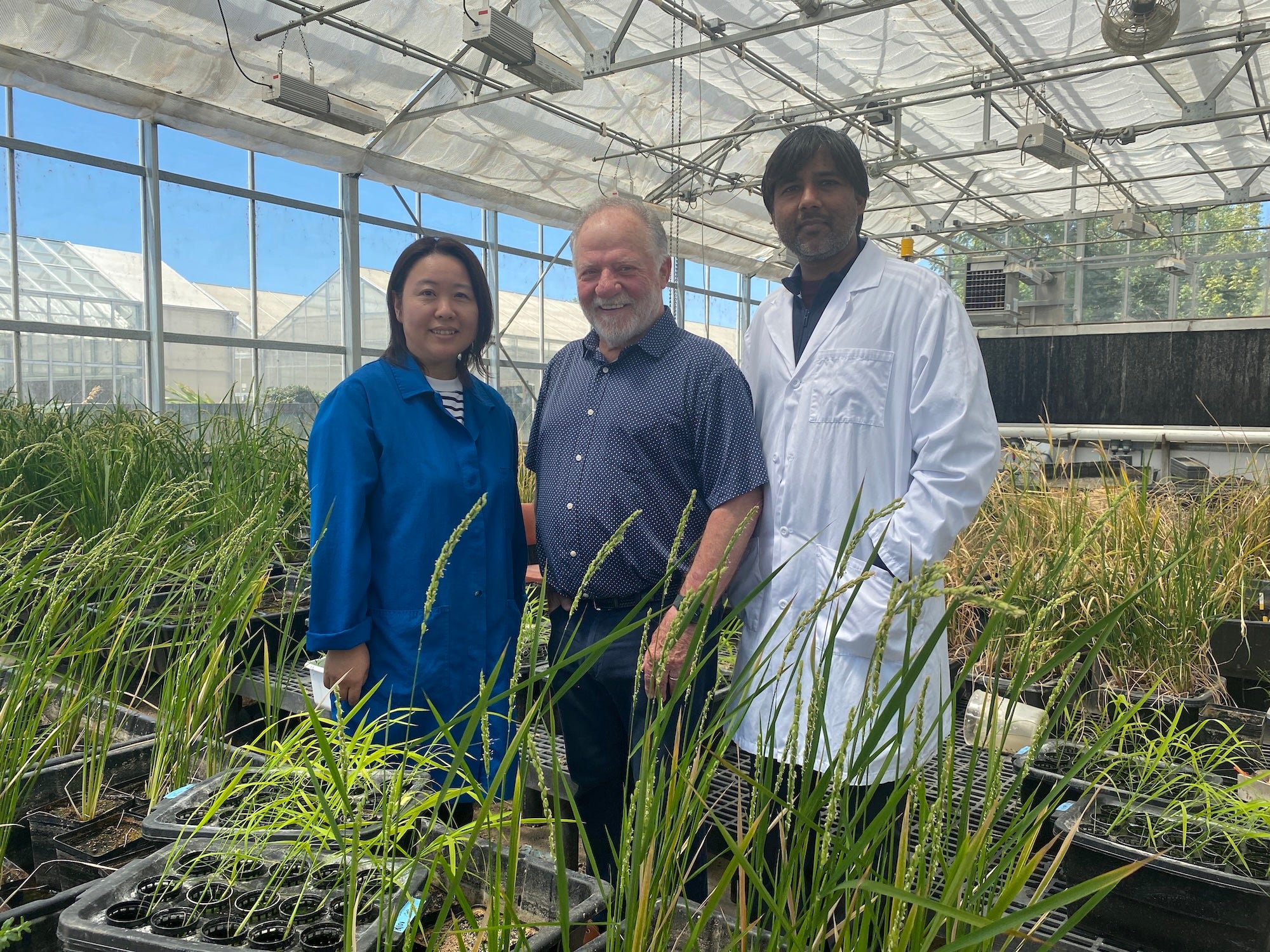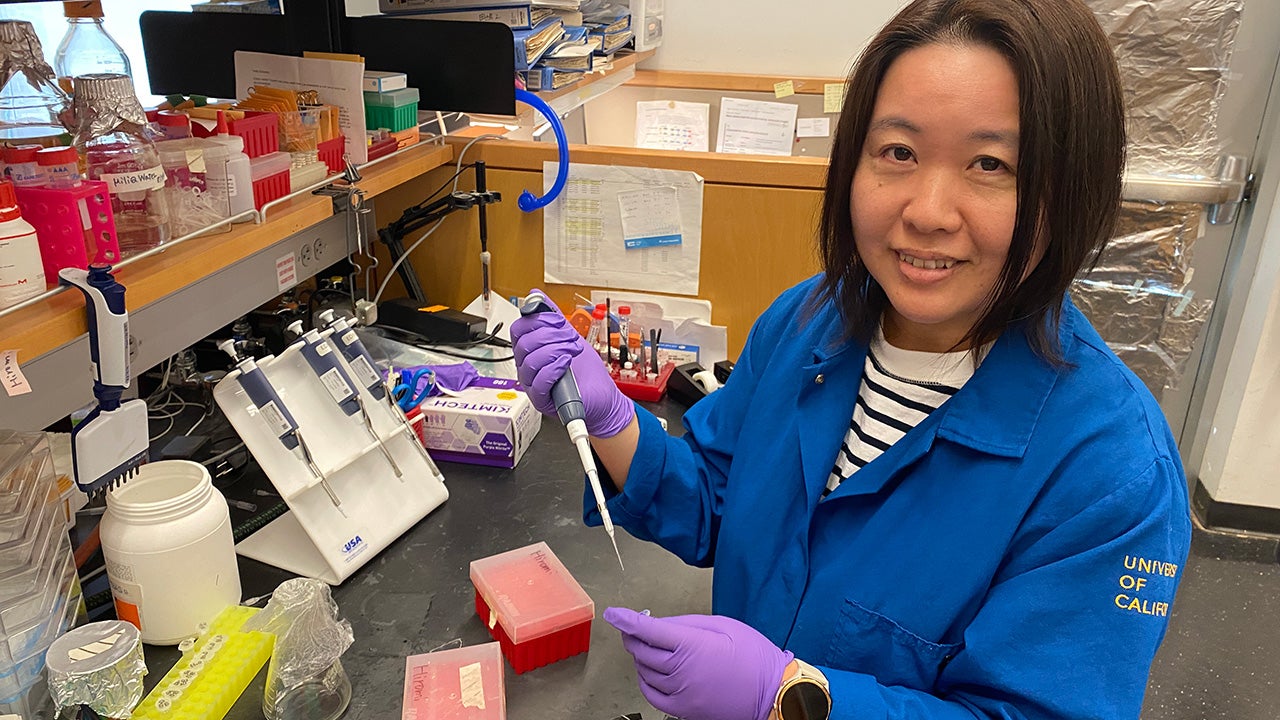Scientists at the University of California, Davis, have developed wheat plants that stimulate the production of their own fertilizer, opening the path toward less air and water pollution worldwide and lower costs for farmers.
The technology was pioneered by a team led by Eduardo Blumwald, a distinguished professor in the Department of Plant Sciences. The team used the gene-editing tool CRIPSR to get wheat plants to produce more of one of their own naturally occurring chemicals. When the plant releases the excess chemical into the soil, the chemical helps certain bacteria in the soil convert nitrogen from the air into a form the nearby plants can use to grow. That conversion process is called nitrogen fixation.
The study was published online in Plant Biotechnology Journal.
In developing countries, the breakthrough could be a boon for food security.
"In Africa, people don't use fertilizers because they don't have money, and farms are small, not larger than six to eight acres," Blumwald said. "Imagine, you are planting crops that stimulate bacteria in the soil to create the fertilizer that the crops need, naturally. Wow! That's a big difference!"
The breakthrough in wheat builds on the team's earlier work in rice. Research also is underway to extend this technology to other cereals.

Worldwide, wheat is the No. 2 cereal crop by yield and takes the biggest share of nitrogen fertilizer, using about 18% of the total. Globally, more than 800 million tons of fertilizer were produced in 2020 alone, according to figures from the United Nations Food and Agriculture Organization.
But plants take up only about 30 to 50% of the nitrogen in fertilizer. Much of what they don't use flows into waterways, which can create "dead zones" that lack oxygen, suffocating fish and other aquatic life. Some excess nitrogen in the soil produces nitrous oxide, a potent climate-warming gas.
The work-around: Protect the fixer
Nitrogen-fixing bacteria produce an enzyme called nitrogenase, the "fixer" in nitrogen fixation. Nitrogenase is only located in the bacteria, and it can only work in environments with very little oxygen.
Legumes such as beans and peas have root structures, called nodules, that provide a cozy, low-oxygen home for nitrogen-fixing bacteria to live.
Unlike legumes, wheat and most other plants don't have root nodules. This is why farmers use nitrogen-containing fertilizer.
"For decades, scientists have been trying to develop cereal crops that produce active root nodules, or trying to colonize cereals with nitrogen-fixing bacteria, without much success. We used a different approach," Blumwald said. "We said the location of the nitrogen-fixing bacteria is not important, so long as the fixed nitrogen can reach the plant, and the plant can use it."
To find a work-around, the team first looked at 2,800 chemicals the plants produce naturally. They found 20 that, among other jobs useful to the plant, also stimulate bacteria to produce biofilms. Biofilms are a sticky layer that surround the bacteria and create a low-oxygen environment, allowing nitrogenase to work. The scientists determined how the plant makes those chemicals and which genes control that process.

Then, the team used the gene-editing tool CRISPR to modify wheat plants to produce more of one of those chemicals, a flavone called apigenin. The wheat, now with more apigenin than it needs, releases the excess through its roots into the soil. In experiments they conducted, apigenin from the wheat stimulated bacteria in the soil to create the protective biofilms, allowing nitrogenase to fix nitrogen and the wheat plants to assimilate it.
The wheat also showed a higher yield than control plants when grown in a very low concentration of nitrogen fertilizer.
Farmers could save billions
Farmers in the United States spent nearly $36 billion on fertilizers in 2023, according to U.S. Department of Agriculture estimates. Blumwald calculates that nearly 500 million acres in the U.S. are planted with cereals.
"Imagine, if you could save 10% of the amount of fertilizer being used on that land," he pondered. "I'm calculating conservatively: That should be a savings of more than a billion dollars every year."
Other authors include Hiromi Tajima, Akhilesh Yadav, Javier Hidalgo Castellanos, Dawei Yan, Benjamin P. Brookbank and Eiji Nambara.
A patent application has been filed by the University of California and is pending. Bayer Crop Science and the UC Davis Will Lester Endowment have supported the research.
Read about the earlier work of the Blumwald team to develop rice that can stimulate its own nitrogen fertilizer here.






